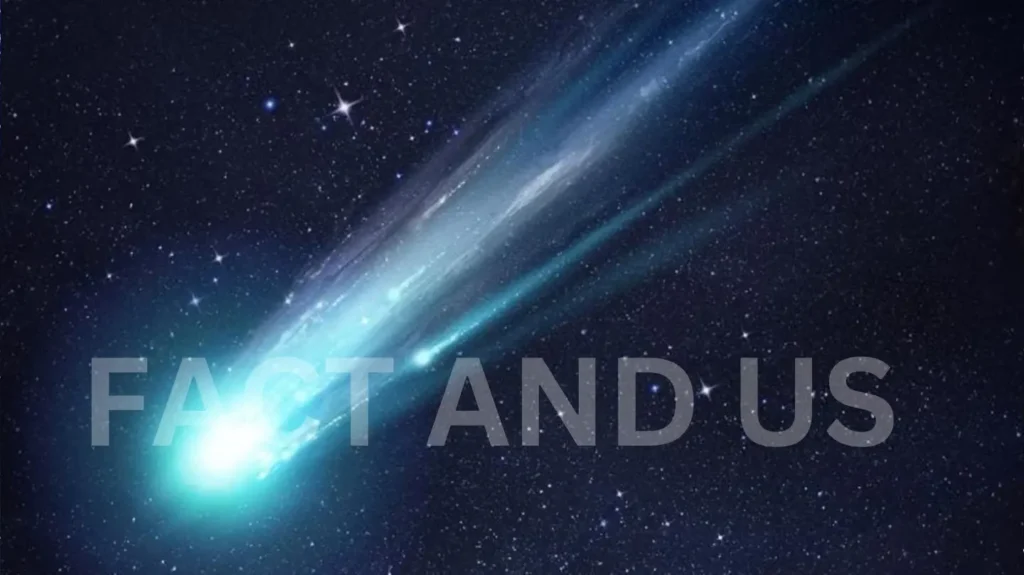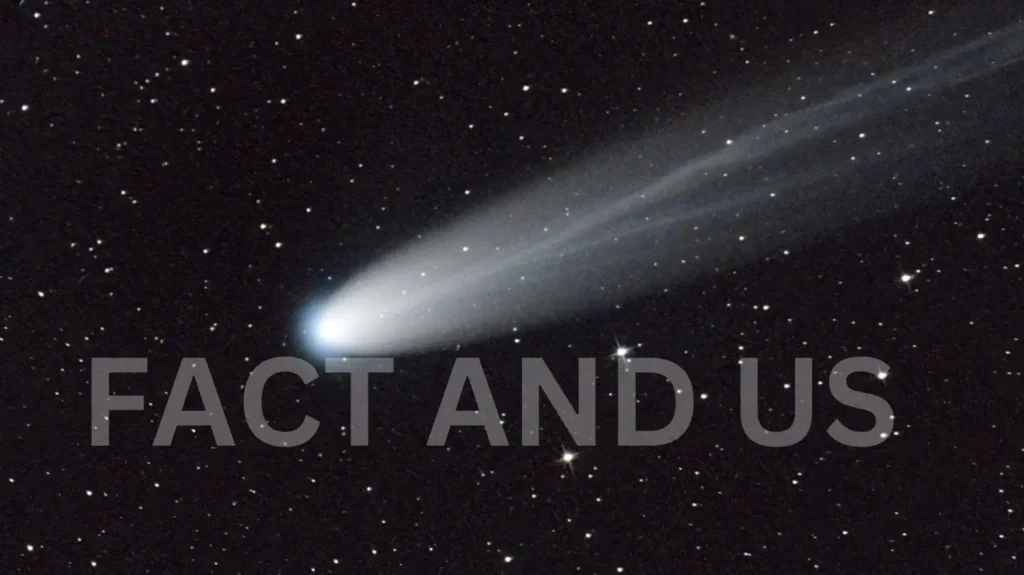Explosive ‘devil comet’ grows seemingly impossible 2nd tail after close flyby of Earth — but it’s not what it seems.
Contents
Comet 12P/Pons

Comet 12P/Pons-Brooks, also known as the devil comet, recently made its closest approach to Earth for more than 70 years. During this close encounter, astrophotographers spotted a seemingly impossible “anti-tail” coming off the comet thanks to an extremely rare optical illusion.The explosive, green “devil comet” that recently swept close to Earth appeared to grow an impossible second tail as it passed us, new photos reveal. But this extra limb, known as an anti-tail, is actually an extremely rare optical illusion caused by the comet’s proximity to our planet. 12P/Pons-Brooks (12P) is a 10.5-mile-wide (17 kilometers) comet with a green hue, which is given off by pairs of carbon atoms, known as dicarbon, in its tail and coma — the cloud of gas that surrounds its icy crust, or nucleus. 12P is cryovolcanic, meaning it occasionally erupts when solar radiation superheats the comet’s icy innards, or cryomagma, causing pressure to build up in the nucleus until the core splits and shoots its guts into space. When this happens, the comet’s coma expands and reflects additional light, making the comet shine brighter than normal.
12P spends the majority of its highly elliptical, 71.3-year orbit around the sun out of sight in the Oort Cloud — a reservoir of comets toward the edge of the solar system. But in the last year, the comet sped through the inner solar system as it made its closest approach to the sun. And as it got closer to our home star, it frequently erupted.12P made its closest approach to the sun since 1953 on April 21 this year when it slingshotted around our home star and began heading back out toward the outer solar system. On June 2, the comet made its closest approach to Earth, when it reached a distance of around 1.5 astronomical units from our planet, which is approximately 1.5 times further away from Earth than the sun.
On June 3, astrophotographers Michael Jäger, Gerald Rhemann and Lukas Demetz captured a striking photo of 12P from Namibia. In addition to its normal blurry tail, the comet sported a much longer and sharper tail known as an anti-tail, in this photo, which appeared to point in the opposite direction to the other tail.
Will comet 12P be visible?

The visibility of comet 12P/Pons-Brooks varies. When it is highly active and close to Earth, it can appear very bright. Other times, it may appear only faintly. The comet will reach its closet point to Earth in June 2024.
Observational history Before 1812
Comet 12P/Pons–Brooks has been identified as a comet observed in 1385 and in 1457. The 1385 apparition was very favourable and the comet was recorded by the Chinese in Ming Shilu and was also mentioned in some European sources. A comet observed by Paolo dal Pozzo Toscanelli in January 1457 and mentioned in Chinese sources is also identified as comet 12P/Pons-Brooks. In both apparitions the comet had magnitude 3 or brighter, not accounting for possible outbursts. It is possible that it was also a comet recorded in Chinese sources in September 245 CE.
So-Yeon Park & Jong-Chul Chae (2007)suggested that comet 12P/Pons–Brooks was also the comets recorded in Asian sources in 1313 and 1668.However, Meyer et al.argue that in the 1313 apparition, the comet would have been difficult to observe, being dim and close to the Sun, while the suggested position in Gemini contradicts the calculated location of comet Pons-Brooks in Aries. The March 1668 comet described by Koreans is probably the bright sungrazing comet observed by Europeans, whose orbit is no way compatible with that of comet 12P/Pons–Brooks.
1812 discovery
Comet 12P/Pons–Brooks was discovered on 12 July 1812, by Jean-Louis Pons. Independently, this comet was later found by Vincent Wisniewski on 1 August, and Alexis Bouvard on 2 August the same year. The comet was spotted with the naked eye on 13 August and by the end of the month a tail measuring 2 degrees in length was reported.[14] Shortly after its initial discovery it was found to have an orbital period of about 70 years with an error of about 5 years. Johann Franz Encke determined a definitive orbit with a period of 70.68 years. This orbit was used to generate an ephemeris for the 1883–1884 return.
What is the rare comet in 2024?
Early on 8 April 2024, a citizen scientist found a comet in images from the ESA/NASA Solar and Heliospheric Observatory (SOHO). It follows the recent discovery of SOHO’s 5000th comet. But this one – named Comet SOHO-5008 – was special for a different reason.
2024 Passage
On 10 June 2020 Pons–Brooks was recovered at apparent magnitude 23 by the Lowell Discovery Telescope when the comet was beyond the orbit of Saturn at 11.9 AU (1.78 billion km) from the Sun,with the uncertainty in the comet’s heliocentric distance being roughly ± 10 000 km at the time. The comet underwent an outburst from magnitude 16–17 to magnitude 11–12 (brightening by ~100×) on 20 July 2023 when it was 3.9 AU from the Sun.The outburst resulted in the comet having a horseshoe shaped coma. It was probably created by the release of about 10 billion kilograms of dust and ice into space.The coma had expanded to a diameter of 600,000 kilometers by 5 August, having an expansion rate of 220 m/s. Although initially spherical, the coma became asymmetrical due to the effects of radiation pressure on the dust.The comet outburst again on 5 October 2023 from magnitude 15 to magnitude 11 (brightening by ~40×).Two more outbursts were recorded on 1 November and 14 November, with the comet brightening to apparent magnitude 9.3 after the later.Outbursts were also observed on 14 Decemberand 18 January 2024.
Where is comet 12P Pons-Brooks right now?
Comet 12P/Pons-Brooks is currently in the constellation of Canis Majoris. The current Right Ascension is 06h 35m 12s and the Declination is -26° 23′ 46”.
When to see 12P Pons-Brooks?
Comet 12P/Pons-Brooks | Pons-Brooks Comet: Visible in March …
After 12P/Pons-Brooks moves away from Earth, it will take another 71 years to complete another full orbit around the Sun. For many of us, its appearance in 2024 will probably be our only chance to see it
Meteor showers
12P/Pons-Brooks is hypothesized to be the parent body of the weak December κ Draconids meteor shower (#336) that is active from about 29 November to 13 December and generates less than 2 meteors/hour. This is the most abundant of the meteor showers predicted to be related to the comet. One more nighttime meteor shower has been tentatively associated with 12P/Pons-Brooks, the northern June Aquilids, although most probably isn’t the parent body.Comet Pons-Brooks could also be the source of a meteor shower on Venus, along with periodic comets 122P/de Vico and 27P/Crommelin.
The 1st ‘major lunar standstill’ in more than 18 years is about to occur. Here’s how to see it.
A major lunar standstill is about to occur. The phenomenon happens every 18.6 years when the moon rises and sets at its most extreme points on the horizon, while also climbing to its highest and lowest point in the sky.In addition to the April 8 total solar eclipse and vibrant displays of auroras, there’s another celestial treat for skywatchers this year: the first “major lunar standstill” since 2006. During this event, the moon rises and sets at its most extreme northerly and southerly positions on the horizon, reaching its highest and lowest points in the 18.6-year lunar cycle.
This is possible because the moon doesn’t follow the same path as the sun. Its rising and setting positions on the horizon change constantly due to the movements of Earth and the moon. The solar system is flat, with the planets orbiting the sun on the same plane, known as the ecliptic. Earth rotates on an axis tilted by 23.4 degrees with respect to this ecliptic, causing the sun to rise and set within almost 47 degrees — a range it gradually covers over an entire year. The moon’s orbit is tilted by 5.1 degrees relative to the ecliptic, allowing it to rise and set within a 57-degree range in any given month. On June 21, the sun will rise and set at its most northeasterly and northwesterly points, while the full Strawberry Moon will rise and set at its most northeasterly and northwesterly points. Conversely, on Dec. 15, the sun will rise and set at its most southeasterly and southwesterly points, while the full Cold Moon will rise and set at its most northwesterly and northeasterly points.
To observe these phenomena, watch from exactly the same location, and you’ll notice a big difference. A pair of stargazing binoculars or a good backyard telescope aren’t necessary to notice the effect, but they may help you zoom in on Earth’s fully-illuminated satellite to get the most out of your lunar skywatching.On June 21, the sun will rise and set at its most northeasterly and northwesterly points, while the full Strawberry Moon will rise and set at its most northeasterly and northwesterly points. Conversely, on Dec. 15, the sun will rise and set at its most southeasterly and southwesterly points, while the full Cold Moon will rise and set at its most northwesterly and northeasterly points.
To observe these phenomena, watch from exactly the same location, and you’ll notice a big difference. A pair of stargazing binoculars or a good backyard telescope aren’t necessary to notice the effect, but they may help you zoom in on Earth’s fully-illuminated satellite to get the most out of your lunar skywatching.
How to find Devil’s comet?
How to see the ‘devil comet’ from Australia – Australian …
The comet’s tails point away from the Sun – so will rise upwards from the western horizon in the evening sky. While the comet is visible with the naked eye, you really need to know where to look. The best bet is to search with binoculars. Make sure to wait until the Sun is well below the horizon
Which comet is rare?
It is huge with a colossal diameter of 30 kilometres and has a horned-like appearance, from where it earned the nickname “Devil Comet”. It orbits around the sun in a highly elliptical pattern approximately every 71 years, and its appearance is a rare event.
What is the 71 year comet?
Likened to Halley’s comet, which has an orbit of 76 years around the sun, 12P/Pons-Brooks is a short-period comet, meaning one that has an orbital period of between 20 and 200 years. The devil comet travels on an orbital period of 71 years and was last seen in 1954.
Stay connected with Fact and US for more such news.
